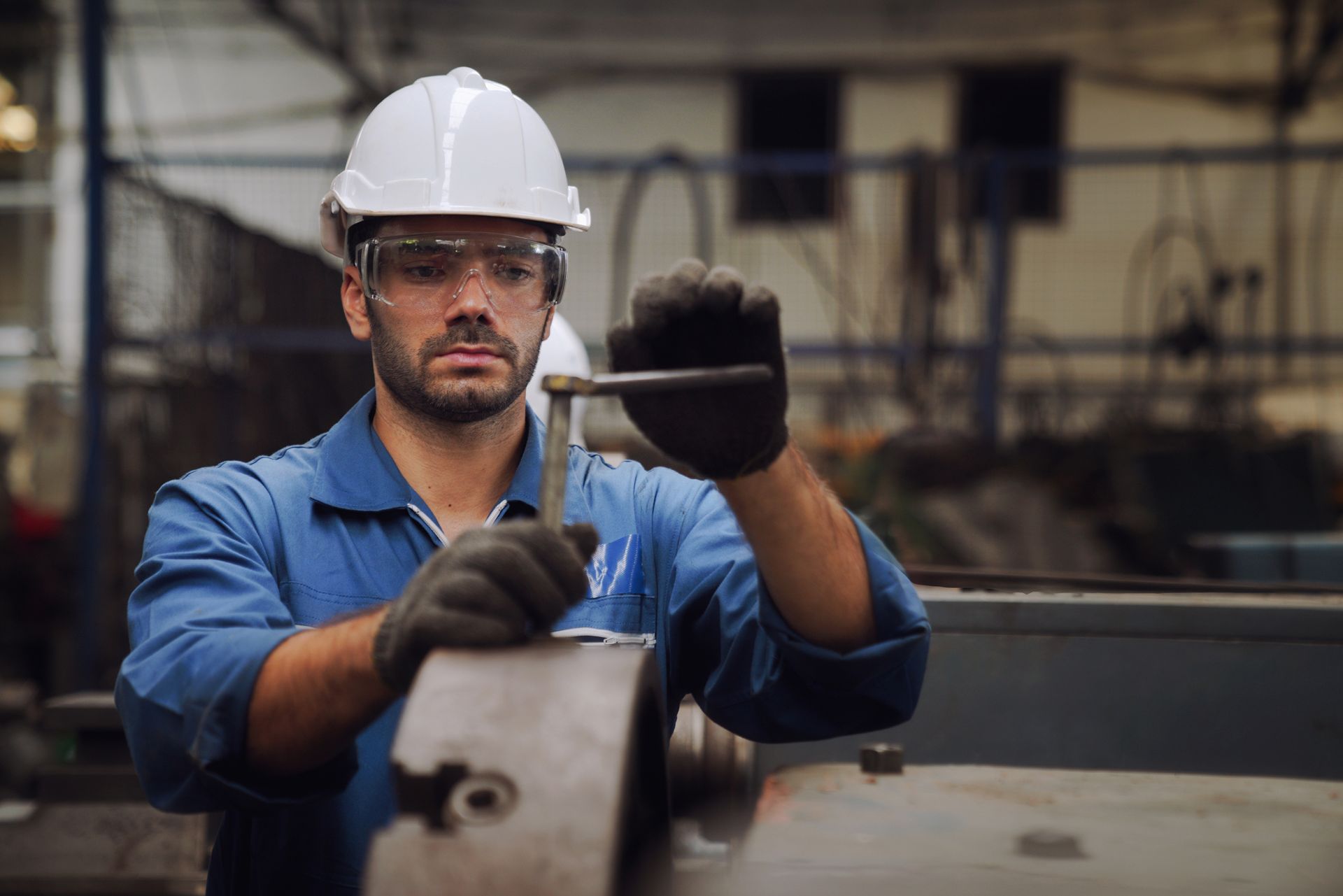Most of us have heard a lot about reactive, preventive and predictive maintenance practices. But, what about Insane Maintenance? Never heard of it? Well, a definition of insanity is “to do the same thing over and over and expect a different result”. Sound familiar?A lot of us practice insane maintenance. We repair equipment again and again only to have it break down again and again. This will be the first of many articles that will be published through our newsletter and website that will help you reduce the tension on your parts and your team. These articles will help you pinpoint those stress points so you can fix the problem properly. We’ll also provide some simple condition monitoring tips to help you increase efficiencies in your maintenance processes. But, before we get into all of that, let’s stop going insane, and start getting MAAD about maintenance.
How many bearings will be replaced this year by technicians practicing insane maintenance in say, an industrial area like Fort McMurray, Alberta – the center of Canada’s oil production? Or, say, Sarnia, Ontario, known as Chemical Valley? To be honest, we don’t know, but an educated guess would be in the millions.
Yet we keep saying that a bearing’s life is infinite as long as you can keep lubricant between the ball and the race. Belts, sheaves, chains and sprockets are different. They all have a lifespan, so we expect to replace them eventually. However, just like bearings, most parts don’t reach their full life expectancy.
This is our insanity. We expect a certain lifespan from our replacement parts but never get it. Yet, we don’t do anything different.
We all know why our parts are failing. It’s the result of the static and dynamic stresses they operate under, day-in and day-out. The solution is simple, reduce the stress, but the road to getting there is difficult.You see, to stop doing the same thing over and over, we have to change the process. It’s like trying to lose weight; we need to make a lifestyle change. That change in our industry is practicing precision maintenance, or basically “Doing the job right and to a tolerance”.
Now we don’t think maintenance is anything anyone should go crazy about, but we’d like to suggest that you get just a little bit MAAD about it. MAAD stands for Measure, Analyze, Action and Document. You should be doing this throughout your condition monitoring program and when you are installing a machine. Actually, you can do this for any measurement that is important to you.
To give you a better idea of what MAAD is all about, let’s give you an example of how we would use it to do a shaft-to-shaft alignment.
Measure. The two most important things with this step are accuracy and repeatability. . Making absolutely sure our measurements are accurate is critical. We all know the saying “measure twice and cut once.” But why stop at two? There is nothing wrong with taking three readings to ensure that we have the correct results and they are repeatable. Once we have an accurate measurement, we write it down in a public record to make it quantifiable, i.e. someone else can see this measurement and check it. To do this, our measurement needs to be recorded as an “as found” (AF) result. Remember, to control a process we have to measure something, but it needs to be accurate and repeatable.
Analyze. The analysis section starts when we have the AF result. We know the specs of our machine (i.e. its optimal condition) and where the machinery is currently. Now, we have to plan the optimum move for machine units. We may look at previous documentation (such as the machine’s history), temperature readings for thermal growth considerations, vibration data and so on. Then, we ask the question, “Can the correction be done?” and “Do we have the means?” Of course, the answer may be a simple, “Yes we’re good to go.”
Action. Now that we have a plan, our action is to implement it. Even leaving the machine as-is is an action. However, if we are moving the machine, it has to be a controlled move using jacking bolts. Unquantifiable movement, like hitting the machine with a mallet (or something worse), doesn’t help. Now let’s say we come up with a problem such as being bolt-bound, which may mean we have to go back to the Analyze stage. If we are using dials to align, we may need to graph it to see our options, or, if we’re using a laser, we can use the bolt/base bound options to get around the problem.
Document. If done right, documentation has been happening throughout the whole process, which is why it’s so important to avoid unquantifiable adjustments. This is a very valuable record that should be added to the machine's history. By keeping this record, we can clearly see how the machinery is acting over time. This allows us to better analyze problems and perform actions to create more reliable machine maintenance over time. To improve our maintenance process, we need to look at the documented data in the machine's history file.As we continue to move through this process of precision maintenance, our equipment will become more and more reliable. By getting MAAD about machine maintenance, we bring our machines’ wear items closer to their expected lifespan, and we can stop going insane with our maintenance practices.
Subscribe to our newsletter and prepare to get MAAD about machine maintenance.


